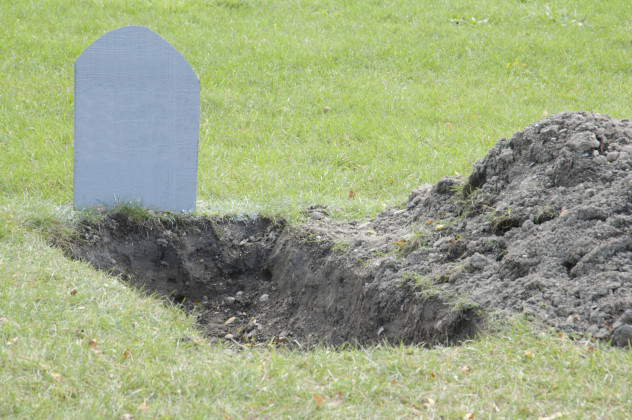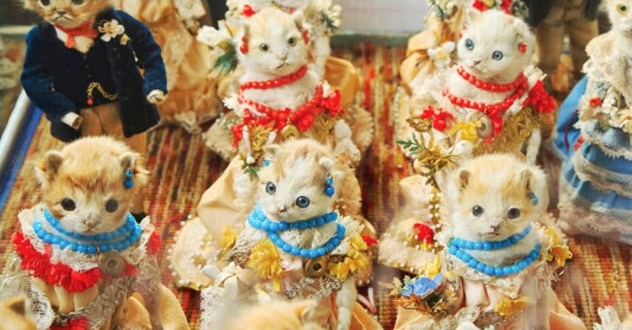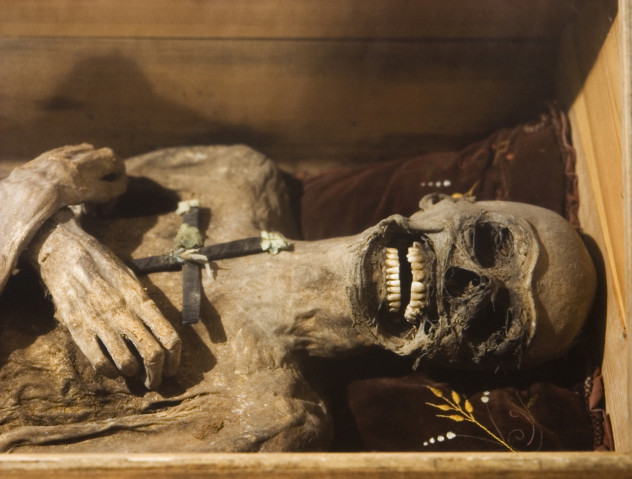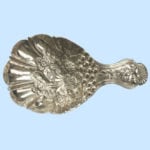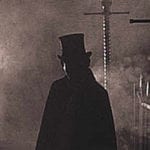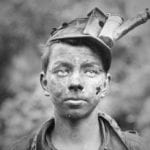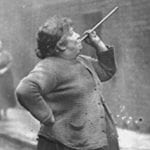10Female Hysteria Doctors
Since the days of Hippocrates, female sexuality has been considered a virulent disease that leads to insanity, irritability, and fainting, among other things. Doctors called this vague female disease “hysteria” and prescribed a simple cure: an orgasm. Specifically, an orgasm given by a trained doctor. Female hysteria reached untold heights in the Victorian era when sexuality was stifled at all times, and some doctors estimated almost one-quarter of females had “hysteria.” This completely imagined epidemic of a non-existent disease led a plethora of new “9 out of 10 British doctors approve” orgasm machines. Hydrotherapy became a popular method to relieve women of their ills. Notably, the “douche” became popular. The douche in the Victorian age was simply a lengthy tube that sprayed water into the vagina. A contemporary review is necessary to understand the douche: As with all orgasmic devices, the doctor had to carefully monitor the women to make sure they were not over-indulging themselves or deviating from the prescribed medical regimen. Otherwise, chaos would reign. Besides the douche, there was George Taylor’s “Manipulator,” which was basically an ugly wooden table with a vibrating sphere in the middle. This is hard to imagine in an age where vibrators now get Wi-Fi and stream music, but Victorian women made do with the “Manipulator.” All of these devices were, in medical jargon, made to create “female paroxysms,” which was the fancy term for female orgasms. The orgasm was supposed to relieve the female’s tension, calm them down, and make their husbands jealous. The practice was so lucrative that it kept many doctors’ businesses booming throughout the 19th century. Interestingly, the idea that doctors could cure female hysteria declined as soon as pornographic films became available. Once females saw they could use the vibrators themselves, without the help of a doctor, it became pretty difficult to convince them to pay for the service.
9Lamplighter
Before the invention of gas lamps, city streets were dark and perilous places. London especially was known for being unsafe after dark as pickpockets and robbers roamed in the shadows. In this “Dark Age” people would hire “link boys” to walk in front of them with a stick and a burning rag dipped in tar to light the way. Often, these link boys were criminals themselves and led their employers into dark alleys to be robbed. This practice ended in the early 19th century when gas lamps were introduced to the streets of London. A notable Victorian newspaper, The Westminster Review, noted that the gas lamps eliminated crime and immorality better than all the church sermons combined. Now, there were tens of thousands of gas lamps that needed to be tended to which created the monotonous job of lamplighting. These men were charged with lighting the lamps before sunset and extinguishing them when the Sun came up. Lamplighters were seen as trusted men and cheerfully carried about their ladders, wick trimmers, and jars of whale blubber. Occasionally, the lamplighters would be blown off of their ladders by an excess build-up of gas from the lamps, but otherwise it was a safe occupation. Lamplighters were proud of their work and the job was passed down for generations as fathers taught their sons all the tricks of the extensively difficult trade. Many lamplighters had lengthy stories about all the strange folks they met in the wee hours of the morning, particularly the “bug cranks.” These were insect enthusiasts who would follow the lamplighters around and collect any interesting bugs who had perished from the gas lamp. Some lamplighters made extra cash by collecting these bugs and selling them to bug collectors. The proud tradition of lamplighting was, however, unable to stop the scourge of Jack the Ripper and the lamplighting families were forced to search for other work as electric lights made their skills completely obsolete.
8Rat Catcher
Before nuclear holocausts and global warming, there was the omnipresent threat of roving gangs of bloodthirsty rats, which actually sounds more terrifying. In the late 18th century, Great Britain was invaded by gray rats—a much larger and more ferocious rat species than the typical black rats. Gray rats were so menacing they sometimes “gnawed the hands and feet of little children,” according to contemporaries. To counter this formidable foe, English cities hired professional rat catchers. These rat catchers were paid for each rat they slayed. Rat catchers usually came from the lowest dregs of society. These poor folks figured they might as well get paid to kill the disgusting animals their poverty forced them to live among. But while most rat catchers were poor folks catching rats in the simplest of ways, there were also professional rat catchers. These professionals used hounds and trained ferrets to increase rat-murdering efficiency. One rat catcher, a gentleman named Jack Black, even became the official rat catcher of Queen Victoria. Mr. Black was so unafraid of rats that he often placed a dozen rats inside his shirt. He actually made most of his money catching, not killing, rats. In Victorian England, rat fighting was a ridiculously popular sport. Mr. Black would sell captured rats to gamblers who put on rat fighting exhibitions. However, rat fighting is a misleading name because it was really a contest between dogs to see which dog could kill the most rats in a certain amount of time—some killed a rat every 2.7 seconds.
7Crossing Sweeper
Victorian era aristocrats were a special breed of stuck-up. They were not content with servants, butlers, and mistresses. They also constantly worried about getting dirt on their clothes. Thankfully, crossing sweepers catered to the aristocrats’ highfalutin needs. These crossing sweepers, usually children or old men, would stake a claim to a specific street crossing. Then, whenever a rich person passed by, they would sweep away horse manure and other filth so the rich ladies’ fancy dresses would not get dirty. This was a common job among crippled people because it required minimal physical exertion and had almost no start-up costs. The crossing sweeper would sweep a path for the rich folks until they reached the end of their “territory.” Then, the rich person would tip them a pittance sum and the sweeping would be undertaken by a neighboring crossing sweeper. Often, crossing sweeps would fight off rival sweepers who entered their territory. Or they would form gangs to create large sweeping monopolies. Sometimes, police would protect crossing sweepers at particularly lucrative intersections to preserve the status quo. Contemporaries divided crossing sweepers into three types: male, female, and Irish. This tells you a little about racial attitudes of 19th-century Britain. Some rich folks did not enjoy the crossing sweepers and lamented the nerve of many crossing sweepers who dared to also beg to stay alive. Nineteenth-century writer Richard Rowe complained, “I would like to see their ranks thinned considerably,” and recommended rounding up all the able-bodied children and teaching them worthwhile skills. Other aristocrats, however, were crestfallen when crossing sweepers began disappearing in the late 19th century. A woman who described herself as a “lady pedestrian” wrote, “It was entirely impossible to find a single crossing to the opposite side of the avenue which could be trod without sinking to the ankle.” Such are the problems of the wealthy. In any case, the crossing sweepers were probably glad to be rid of their positions as they accepted equally low-paying jobs in factories.
6Resurrectionists
There was a grave problem in 19th-century England: There were simply not enough cadavers. In the 19th century, there was an unexpected upsurge in the study of anatomy which required thousands more cadavers to dissect and study. However, cadavers were hard to legally come by since only a criminal’s body could be used. And there weren’t nearly enough executions to keep up with the demand. This created resurrectionists. These were grave robbers with a very different agenda than stealing Grandma Wilson’s diamond pendant. Instead, these grave robbers would specifically not steal any money or riches from the casket. Rather, they were hired by doctors to deliver fresh young corpses to the anatomy schools in exchange for large sums of money. The resurrectionists were careful to only steal corpses because that was only a misdemeanor. If they stole any valuables, their crime became a felony—with a possible penalty of execution—where they would become a new cadaver. So, resurrectionists just stole bodies and left thousands of empty caskets filled with valuables all over Great Britain. Doctors sometimes cut out the middleman and stole the bodies themselves—a very undistinguished job for those tasked with saving lives. However, the lucrative resurrectionist practice ended in 1832 when Great Britain passed the Anatomy Act which made it much easier to legally obtain cadavers. Now, you are just creepy and probably into necrophilia if you are digging up graves.
5Leech Collector
Everyone had that awful childhood experience where you went to retrieve your floaty noodle from the middle of the lake and came back with two leeches. And then your grandpa burned them off with his trusty lighter—along with a little bit of your skin, too. Maybe that was just me. Two leeches would be a bad day on the job for a 19th-century leech collector. These folks waded into leech-filled ponds and stayed there for hours until their legs were covered in leeches. Often, the leech collectors had wounds for months and constantly suffered from a lack of blood. Some leech collectors used animals such as horses as proxies. Leech collectors went through these trials because leeches were the Tylenol of the 19th century, and doctors needed lots of them. Over 42 million leeches were exported from England to France in the first half of the 19th century. However, the trade was not sustainable and, in the mid-1800s, the medicinal leech, Hirudo medicinalis, was thought to be extinct in England. However, to the joy of all, one was found attached to a dog’s leg in 1970 and small populations have begun to form again. Leech collectors also lost credibility as people finally questioned whether these leeches actually had a human’s best interest in mind or were just blindly sucking blood. These factors led to a dramatic fall in the medicinal use and the leech collectors were left with scarred legs and no further career opportunities.
4Anthropomorphic Taxidermist
Taxidermy has always been weird. But taxidermists in the 1800s took things to even creepier extremes. These taxidermists, led by Walter Potter, decided that simply stuffing dead animals was not enough. Instead, Potter created elaborate dioramas where animals—usually small rodents and birds—undertook very human actions. These dioramas included kitten weddings, squirrels playing cards, rats living in a drug house raided by rat police, and guinea pigs playing cricket. Potter dressed these animals up in doll clothing, created miniature houses, and did what little girls do—except he did these things with dead animals. Potter’s collection was so elaborate that his hometown, the village Bramber in Sussex, still has multiple museums devoted to his tableaux. There really is not much more to explain other than that a grown man spent years making a diorama of a monkey riding a wild goat and adding extra legs and arms to unborn animal fetuses.
3Mummy Unroller
Before Beatlemania, there was 1822’s curious Egyptomania. This craze for ancient Egyptian culture was spurred by linguists deciphering ancient Egyptian hieroglyphics. This allowed Egyptian culture to finally be understood and publicly disseminated. Now, the door was open for the public spectacle of mummy unrolling. For these large events, mummy unrollers purchased ancient Egyptian mummies and thousands would watch them reveal the mummies. People paid a guinea for a seat in the front, or half a guinea for a back seat, and that was a fun Friday night. Men like Thomas Pettigrew became famous and fabulously rich buying up mummies and exhibiting them for curious crowds. Pettigrew played the showman and slowly unwrapped the mummy while lecturing on Egyptian culture and passing around pieces of the wrapping in case anyone wanted to smell 4,000 years of death. Later, Pettigrew took things to the next level and fulfilled the Duke of Hamilton’s wish by publicly turning the Duke’s recently dead body into a mummy. Later, modern archaeologists discovered that many of the mummies were actually fakes.
2Sin-Eater
Most people will agree that there are few better feelings than getting paid to eat. So, in theory, many people would flock to be a sin-eater. Until the job specifics are revealed. Sin-eating is based on the folktale that after someone dies another person can absorb the dead person’s sins by eating a meal off the deceased’s chest. Until the mid-19th century, many Britons believed that sin-eating gave the deceased easier access into heaven. Furthermore, common folk believed sin-eating could prevent the soul of someone who died suddenly from aimlessly wandering the countryside as a ghost. Naturally, most sin-eaters were beggars who could not turn down a hot meal off a lukewarm chest. Usually, each village would have its own go-to sin-eater. This person was socially stigmatized since everyone thought sin-eating made them successively more evil every time they did their job. Though sin-eating was conceptually a religious undertaking, it was not supported in any way by local churches or religion in general. Churches turned a blind eye to sin-eating, preferring to let the tradition die out naturally as people realized the absurdity of what they were doing.
1Knocker-Up
Imagine a world without your cell phone. Now imagine a world without alarm clocks. How would people get up in the morning? Thankfully, Britons had knocker-ups or human alarm clocks to help. Working-class folks depended on knocker-ups to run around town at a predetermined time in the morning and wake them up. Since many working-class folks lived in tall apartment buildings, knocker-ups could not simply pound on the door a few times and move along. Instead, knocker-ups utilized long metal-tipped poles to knock on slabs of slate placed near bedroom windows. Customers would write the time they wished to be woken up on the slate slabs. Diligent knocker-ups would not leave the window until the customer woke up. This left the embarrassing possibility that a client spent the night at a brothel and the knocker-up banged for hours and hours and then the whole village knew. Nice factories even hired their own knocker-up to make sure their workers were on time for their soul-crushing Industrial Revolution jobs. Knocker-ups could not fight the rise of technology and, once alarm clocks came, they became completely obsolete. I earned seven worthless liberals arts degrees in college. Follow me @filthyson to see how that’s going.




